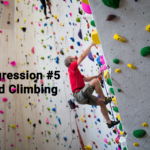Progression #5 Lead Climbing
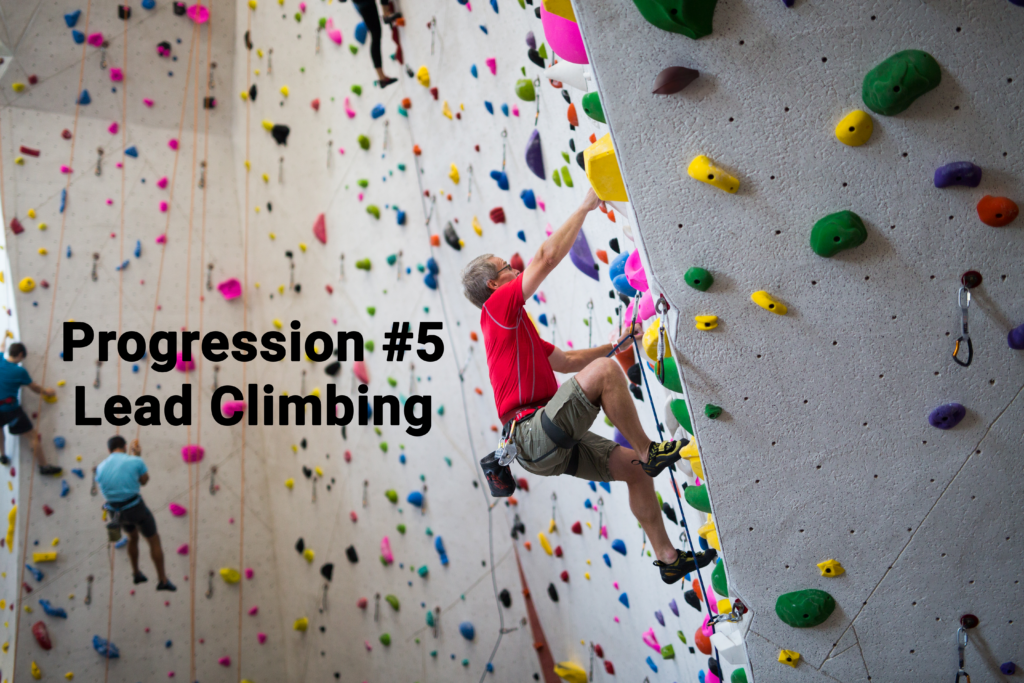
Read previous installments here… Progression #1 First Time Climber, Progression #2 Top Roping, Progression #3 Bouldering, and Progression #4 Do X to Get Better at X.
So, you’ve been climbing for a while, progressing from auto belays to top roping. At this point, we should have quite a bit of climbing mileage under our belt and be climbing at the 5.9 level or above. The next step in your climbing journey to consider is lead climbing. Why should we consider getting lead certified? Once we are lead certified, we will have access to all the routes in the gym, and if we want to be self-sufficient outdoors, lead climbing is a necessary skill! Certain routes just cannot be top roped, like large roofs and overhangs. Also, you may have noticed that some routes at Vertical Endeavors cannot be top roped, and are available for lead only.
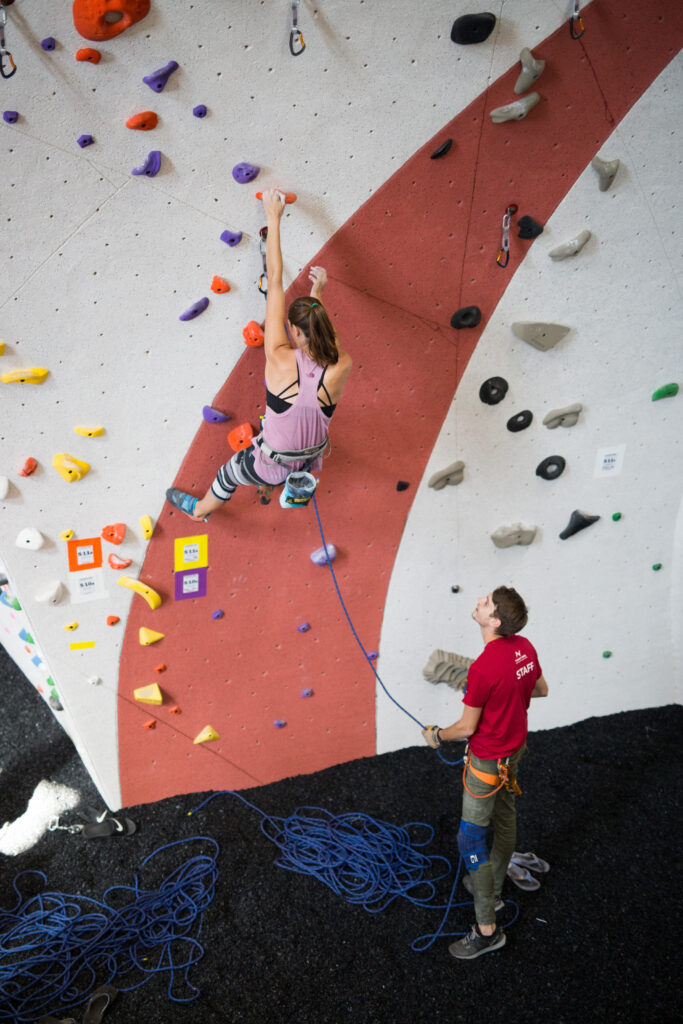
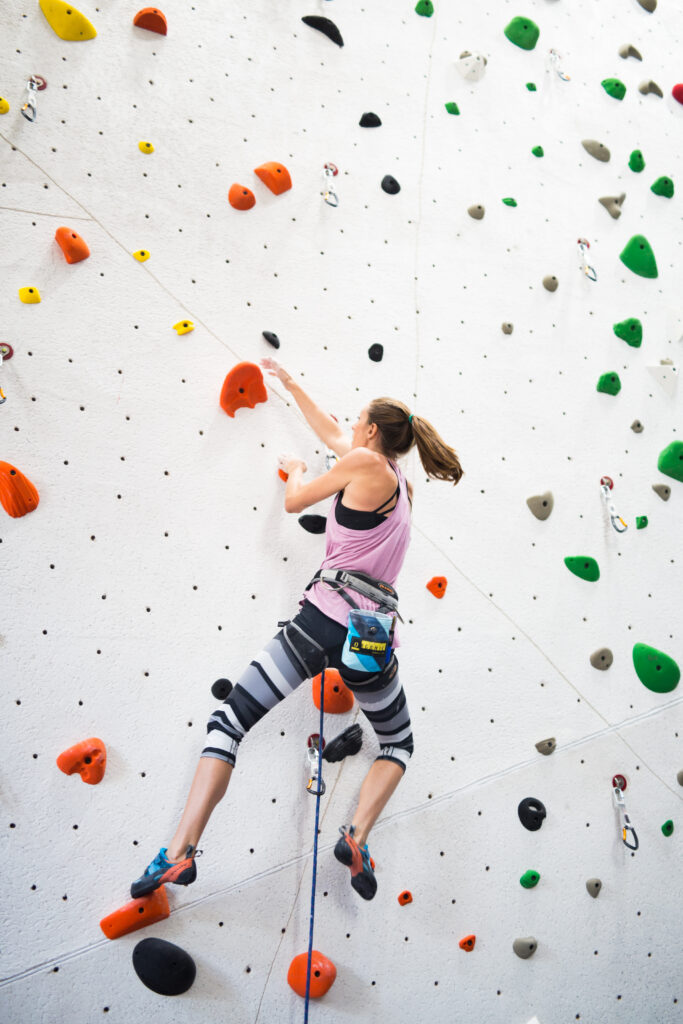
Auto belays are nice because we can climb alone, and it’s a great way to introduce ourselves to climbing and start building the necessary foundation for progression. Top roping is great because it allows us to climb more routes and spend more time on the route, working sequences efficiently without having to lower after every attempt. Lead climbing is the holy grail of rock climbing; the consensus is that a climb isn’t really sent until it’s been sent on lead.
Lead climbing ups the ante. Not only is it physically more engaging, but also mentally challenging. Physically, because we have to hold on with one arm and make the clips. Mentally, because we start dealing with larger falls; climbing becomes a lot more committing when you are looking at taking a 6+ foot fall. Climbing smoothly and efficiently becomes critical; finding the right positions to clip, resting properly, and executing sequences with confidence is crucial. A good way to prepare for lead climbing is to mock lead. As you climb on top rope, envision yourself on lead; try to move as efficiently as possible, not wasting any precious energy or time. As you climb, find nice balanced positions and pretend to make the clips.
Since the steepest walls in the gym cannot be top roped, practice on the bouldering wall. Find easy, juggy routes to run laps on, focusing on fluid movement where you can really engage your lower body and keep your feet on. This will start building the necessary strength, endurance, and technique so that when you eventually start leading the larger overhanging walls, you have a decent base to begin with.
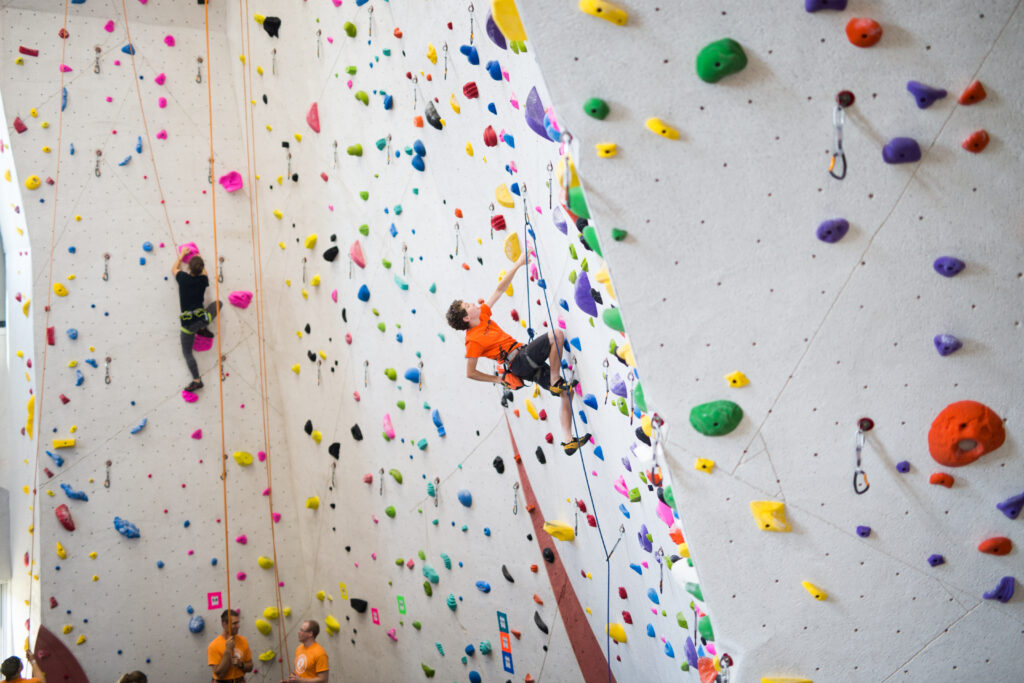
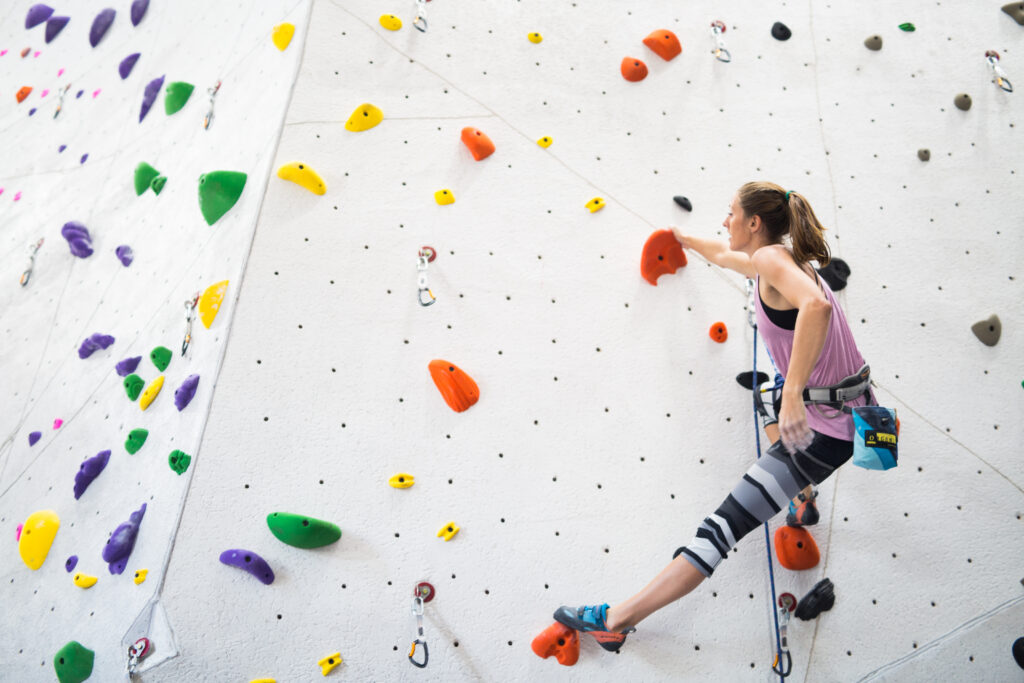
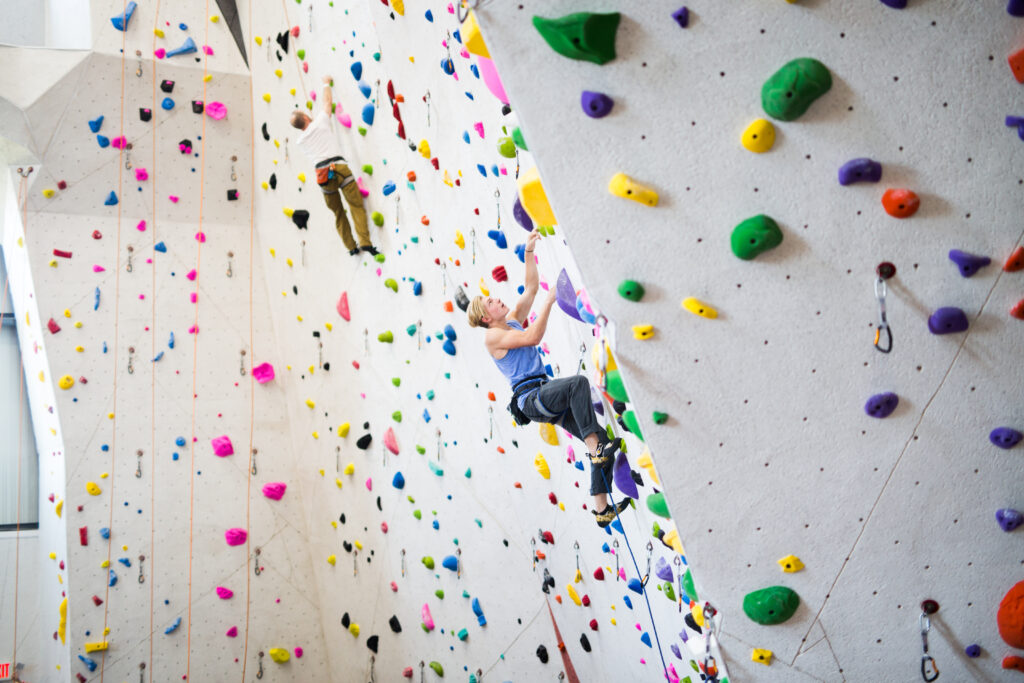
You’ve been building your skills and preparing, so what’s next? How do you know you are ready? How do we take that step and get our fancy yellow tag? First, you will want to be top certified, so make sure you’ve done that. Being a confident top rope climber and belayer is necessary for lead climbing. Another prerequisite is flashing 5.9, so make sure you are comfortable on terrain of that difficulty. Once you hit that level, the next step is to sign up for one of our Sport Lead Classes. This class covers everything necessary to get you prepared for your lead test. The class covers the art of controlled and efficient lead belaying, how to clip the rope into protection, lead climbing techniques, the art of falling, and how to catch a fall. You can sign up here; the price is $55 for non-members and $35 for members.
Once you have completed the test, visit the front desk and ask to do your lead test. During the test, you will demonstrate how to properly lead belay, safely catch a fall, properly lead climb, and take a lead fall. If all goes well and you know what you are doing and pass the test, you will fill out some paperwork and receive your coveted yellow tag.
Once you are lead certified, the real fun (and work) begins. Start building your volume of lead climbs to gain more experience under your belt. A good strategy is to start easy; build a strong base of climbs at or below your flash level. This will boost your confidence, get you into the lead mindset, and build good technique. You might not feel comfortable trying hard and falling above your clip when you first start, and that is perfectly fine. Just like finger strength or pulling power, falling is a skill that we have to learn and practice. Adding small, controlled falls at your clip is a great way to build confidence. From there, you can practice going to the next clip and taking your fall before you clip. Repeated exposure to falls builds confidence in your gear, belay, and the feel of falling.
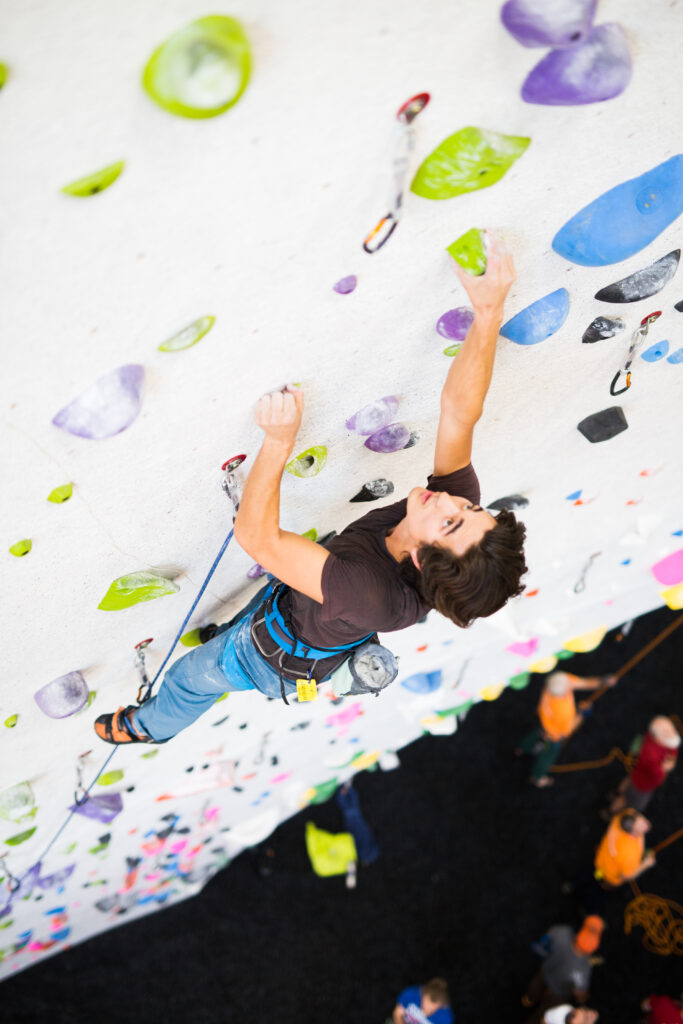
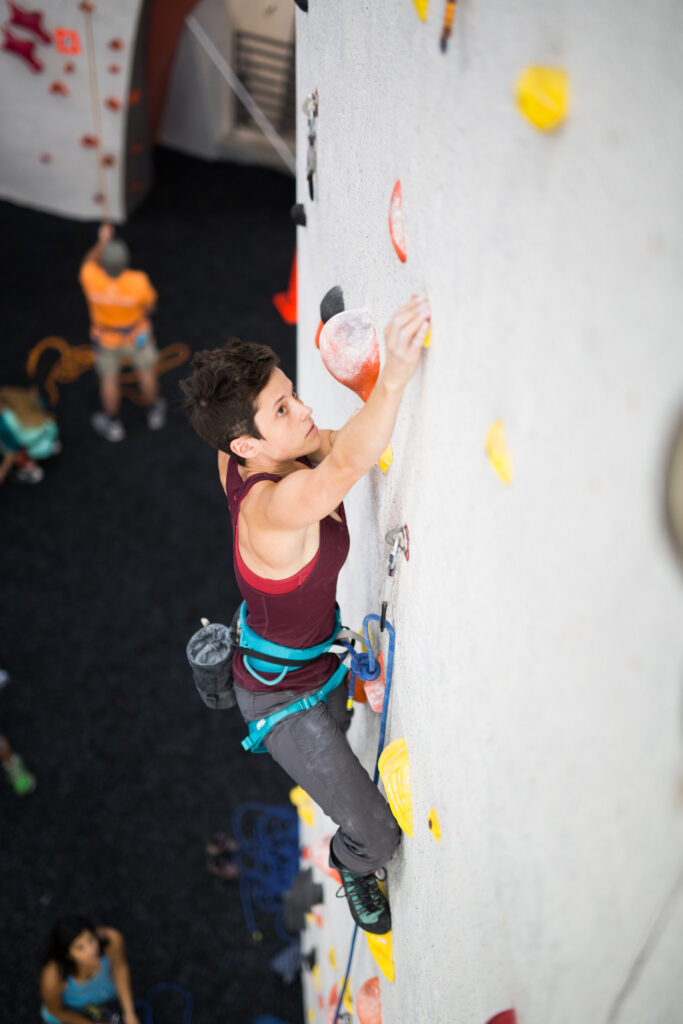
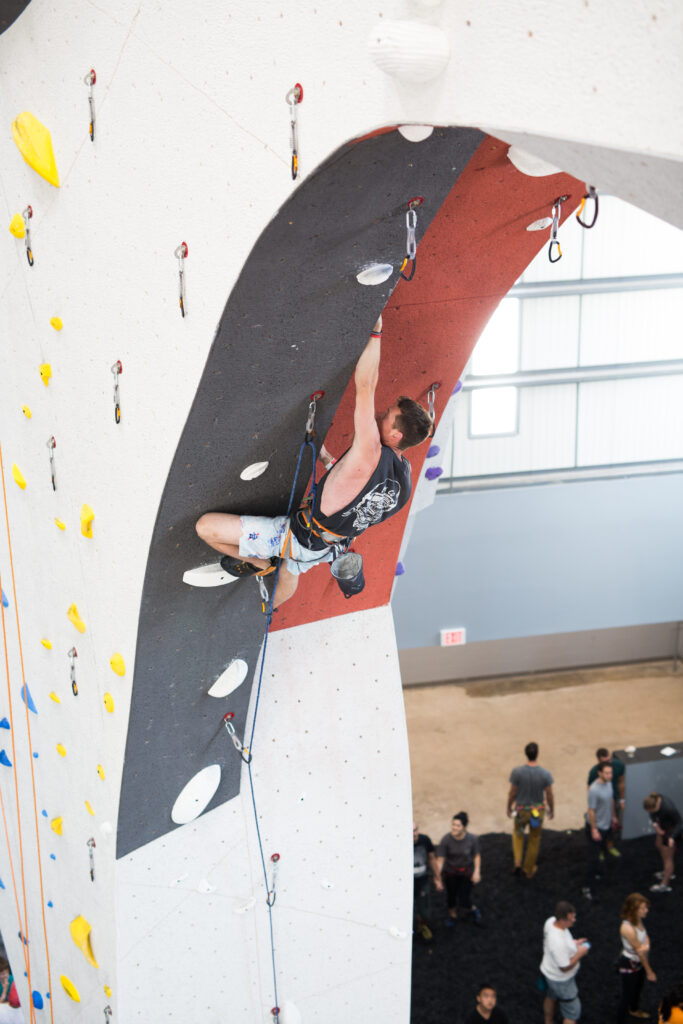
Just like endurance or finger strength, we need to practice this often to maintain the skill. Make it a routine part of your session. A great drill to do is climb to your clip, fall, climb back up, clip, move to the next clip, fall, and repeat until you are at the top of the wall. You should start to feel your hesitation on falling decrease. Once you are comfortable taking controlled falls, you will want to find a route that challenges you, where you may or may not fall. Give it your all and commit! Do the moves, and if you fall, you fall; or maybe you just barely make it through. This is important for building confidence.
Vary your terrain! A great way to build confidence and a strong base is to seek out climbs on varying walls and hold types. This is effective because you can lower your difficulty level; expose yourself to climbing that feels uncomfortable; and push your mental barriers. Similar to switching up grip and hold types on climbs, this dual exposure gets you out of your comfort zone.
Climbing is dangerous, it involves inherent and other risks and cannot be eliminated. The information presented here does not describe all of the risks associated with climbing and is not intended to replace or supersede expert instruction and training.
© 2024 Vertical Endeavors, Inc. All rights reserved. The contents of this article, photographs, and graphical representations are protected by U.S. and International copyright laws. Reproduction and distribution, in part or whole, without written permission from Vertical Endeavors are prohibited. The opinions and information contained in this article are for entertainment and informative purposes. They are those of the author and may not represent those of Vertical Endeavors, and do not necessarily reflect the ideas, ideologies, opinions, or points of view of the organization, affiliates, owners, stockholders, partners, suppliers, licensors, or staff. Under no circumstances shall Vertical Endeavors or any entity that is, has been, or will be affiliated be liable for any indirect, incidental, consequential, special, or exemplary damages arising out of or in connection with the information contained in this article.

